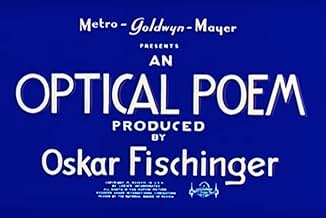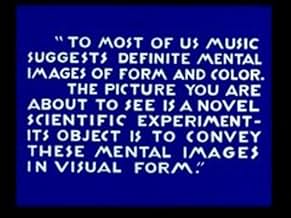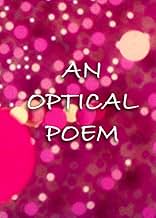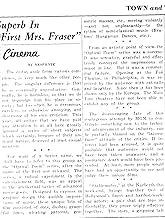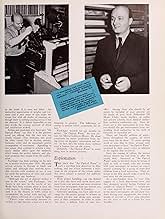Aggiungi una trama nella tua linguaMental imagery of music is visualized with two-dimensional shapes dancing to the rhythm of Franz Liszt's Hungarian Rhapsody No. 2.Mental imagery of music is visualized with two-dimensional shapes dancing to the rhythm of Franz Liszt's Hungarian Rhapsody No. 2.Mental imagery of music is visualized with two-dimensional shapes dancing to the rhythm of Franz Liszt's Hungarian Rhapsody No. 2.
- Regia
Recensioni in evidenza
Just about anyone who's ever made a music video especially an abstract one owes a debt of gratitude to Oskar Fischinger. This short film is a charming rendition of Liszt's Second Hungarian Rhapsody set to a dazzling series of colored dots, lines, flashes and vivid visual effects that often look like a Piet Mondrian painting come to life. Paul Marquardt's often cheeky orchestration far different from the one usually heard adds a quite inventive series of tonal effects to the film that only underscores the rambunctious appeal of Fischinger's animation. I remember seeing films like this from the 1960's and not realizing anyone had done anything this imaginative with the same format thirty years earlier and I can't for the life of me imagine what unsuspecting moviegoers who caught this in 1937 on a program headlined by an MGM feature of the period made of it!
Abstract images float across the field in time to Liszt's Second Hungarian Rhapsody.
Oskar Fischinger had been producing this sort of abstract animation since 1924 in Germany as an outgrowth of the Dadaist movement. He was not the only film maker to at least dabble in this sort of work. Over in England, Len Lye started doing the same thing with the introduction of sound to films, and later, Norman McLaren would make several of his early shorts doing much the same. In fact, a couple of years after this came out, part of FANTASIA would do the same. It was a natural outgrowth of abstract art and program music, in which the music was meant to evoke emotions or scenes or even stories. They didn't call them etudes for no reason, but because they evoked enquiring thoughts. Only with abstract animation like this, the audience was called upon to go its own way, and perhaps afterwards discuss what it was all about.
Pretty colors, though. It reminds me of the days I was part of the light show crew at the Fillmore East.
Oskar Fischinger had been producing this sort of abstract animation since 1924 in Germany as an outgrowth of the Dadaist movement. He was not the only film maker to at least dabble in this sort of work. Over in England, Len Lye started doing the same thing with the introduction of sound to films, and later, Norman McLaren would make several of his early shorts doing much the same. In fact, a couple of years after this came out, part of FANTASIA would do the same. It was a natural outgrowth of abstract art and program music, in which the music was meant to evoke emotions or scenes or even stories. They didn't call them etudes for no reason, but because they evoked enquiring thoughts. Only with abstract animation like this, the audience was called upon to go its own way, and perhaps afterwards discuss what it was all about.
Pretty colors, though. It reminds me of the days I was part of the light show crew at the Fillmore East.
Optical Poem, An (1937)
*** (out of 4)
This 6-minute animated short is considered by many to have been the inspiration for Disney's FANTASIA. This film contains various animated images being played to Franz Liszt's Hungarian Rhapsody No. 2 and makes for quite a ride. In his day, director Fischinger was pretty much overlooked and after during down a job offer from Disney, he would eventually be fired by both MGM and Paramount. His animation career never took off in the movies but years later his work began to be reevaluated and today's he's considered one of the best. This, considered his best film, is pretty strong in terms of its visual style even though it's rather simple. A blue background with various circles, squares and other images. The film moves along quite well, although the six-minutes do start to get a bit long towards the end.
*** (out of 4)
This 6-minute animated short is considered by many to have been the inspiration for Disney's FANTASIA. This film contains various animated images being played to Franz Liszt's Hungarian Rhapsody No. 2 and makes for quite a ride. In his day, director Fischinger was pretty much overlooked and after during down a job offer from Disney, he would eventually be fired by both MGM and Paramount. His animation career never took off in the movies but years later his work began to be reevaluated and today's he's considered one of the best. This, considered his best film, is pretty strong in terms of its visual style even though it's rather simple. A blue background with various circles, squares and other images. The film moves along quite well, although the six-minutes do start to get a bit long towards the end.
What makes me chuckle about this short film is that MGM actually financed it! Who'd have thought that such attitudes were ever present at the big studios? The intertitle at the start calls the movie a "scientific experiment"*, gawd those guys were dumb. Anyway they let Fischinger get on with his business so I can't complain. The second time I watched it I really was dumbfounded by the MGM logo, for once, ars gratia artis actually meant something! Anyway the film is a visual accompaniment to Liszt's Hungarian Rhapsody no.2. Fischinger chose his music really well because there are lots of sea changes within the piece that allows him to do something totally different at the mood switches. He uses coloured paper circles and stop motion animation, to create a geometrical ballet. He must have done a lot of work because the movements are all very smooth. In fact it's really a masterpiece of technical craft and almost unbelievable how synchronised the animation is to the music.
It brought a big smile to my face and that's really rare.
* "To most of us, music suggests definite mental images of form and colour. The picture you are about to see is a novel scientific experiment. Its object is to convey these mental images in visual form"
It brought a big smile to my face and that's really rare.
* "To most of us, music suggests definite mental images of form and colour. The picture you are about to see is a novel scientific experiment. Its object is to convey these mental images in visual form"
It's an MGM animated short with Hungarian Rhapsody No. 2 by Franz Liszt playing. It's Technicolor. It's all bright colors and geometric shapes. It's a little experimental. It's interesting. Sometimes, the movement is pretty good, but other times, I want it to switch with the music tempo a lot more. One of the most compelling aspect of this piece of music is its many changes of tempo. The visuals need to match that better. This type of animated experiments have a long Hollywood history. Producer Oskar Fischinger would go on to do a sequence in Walt Disney's Fantasia (1940) which obviously drew inspiration from this.
Lo sapevi?
- QuizAs this was released two years before "Fantasia," it's reasonable to assume either Disney or someone who worked for him saw this and realized the possibilities of non-narrative animation set to classical music; certainly the "Toccata and Fugue in D Minor" sequence bears a striking similarity.
- Citazioni
Prologue (Title): To most of us music suggests definite mental images of form and color. The picture you are about to see is a novel scientific experiment - Its object is to convey these mental images in visual form.
I più visti
Accedi per valutare e creare un elenco di titoli salvati per ottenere consigli personalizzati
Dettagli
- Data di uscita
- Paese di origine
- Lingua
- Celebre anche come
- MGM Miniatures (1937-1938 Season) #5: An Optical Poem
- Azienda produttrice
- Vedi altri crediti dell’azienda su IMDbPro
- Tempo di esecuzione
- 6min
- Proporzioni
- 1.37 : 1
Contribuisci a questa pagina
Suggerisci una modifica o aggiungi i contenuti mancanti

